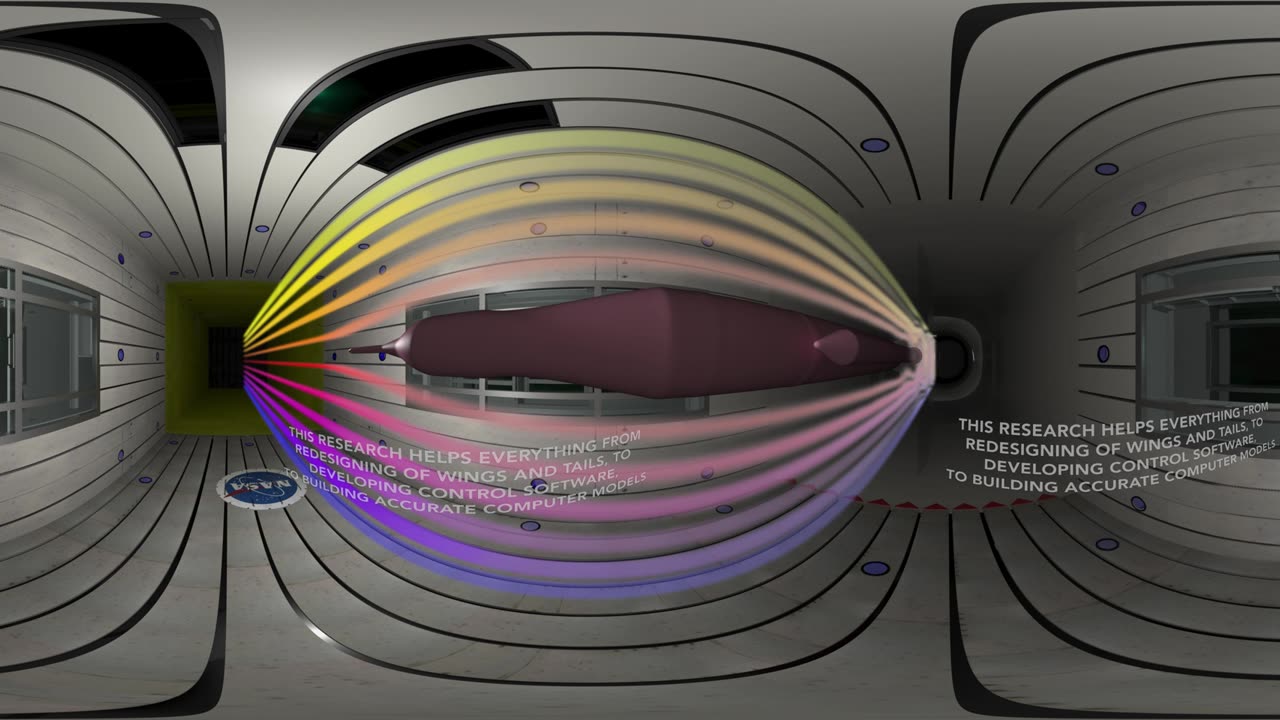Premium Only Content

Wind Tunnel
#NASA #WindTunnel #Aerodynamics #Aeronautics #Aerospace #Research #Engineering #Science #Testing #Aviation#SpaceExploration #LangleyResearchCenter #AmesResearchCenter #GlennResearchCenter #WindTunnelTesting #AircraftDesign #SpacecraftDesign #Hypersonics #Technology #Innovation
NASA (National Aeronautics and Space Administration) has several wind tunnels that it uses for aerodynamic testing and research. Wind tunnels are facilities designed to simulate the flow of air over various objects, such as aircraft, spacecraft, and even cars. These tunnels are used to study and analyze the aerodynamic characteristics of these objects, which is crucial for the design and testing of vehicles and spacecraft.
Some of the notable wind tunnels operated by NASA include:
Langley 14-by-22-Foot Subsonic Tunnel: This wind tunnel, located at NASA's Langley Research Center in Virginia, is one of the largest and most versatile subsonic wind tunnels in the world. It is primarily used for testing aircraft and their components at subsonic speeds.
Ames Unitary Plan Wind Tunnel: This facility, located at NASA's Ames Research Center in California, is used for testing high-speed aircraft, including supersonic and hypersonic vehicles. It's an essential tool for studying aerodynamics and propulsion at high speeds.
Glenn Research Center's 10- by 10-Foot Supersonic Wind Tunnel: This wind tunnel, located at NASA's Glenn Research Center in Ohio, is used for research on supersonic and hypersonic flight. It can simulate speeds well above the speed of sound and is important for developing and testing high-speed aircraft and spacecraft.
Langley's National Transonic Facility: This tunnel, also located at NASA's Langley Research Center, focuses on transonic aerodynamics, which is the study of airflow at speeds close to the speed of sound. It's used for testing various aircraft configurations in these critical flight regimes.
Ames 11-Foot Unitary Plan Wind Tunnel: This wind tunnel at NASA Ames Research Center is primarily used for testing high-speed, subsonic and transonic aircraft. It has a versatile design that allows for a wide range of test conditions.
These wind tunnels play a crucial role in NASA's research and development efforts, helping to advance aerospace technology and improve the efficiency and safety of aircraft and spacecraft. They are used for everything from studying basic aerodynamic principles to fine-tuning the designs of specific vehicles before they are built and flown.
-
 LIVE
LIVE
Glenn Greenwald
3 hours agoWeek in Review: Douglas Murray VS Dave Smith Debate, Tariffs, and More with Glenn Greenwald, Lee Fang, & Michael Tracey | SYSTEM UPDATE #438
9,248 watching -
 56:03
56:03
BonginoReport
3 hours agoICE Boss Wants Deportations To Run like Amazon Prime - Nightly Scroll w/Hayley Caronia (Ep.25)
29.7K17 -
 LIVE
LIVE
Sarah Westall
19 minutes ago“Most Important Story of the Decade” Globalists Move to Fund World Gov w/ Alex Newman & Sam Anthony
451 watching -
 LIVE
LIVE
The Jimmy Dore Show
3 hours agoDHS to Screen Visa Applicants for WRONGTHINK! Media LYING About Measles Death! w/Norman Finkelstein
7,385 watching -
 LIVE
LIVE
Nerdrotic
3 hours ago $9.89 earnedMarvel Is SCREWED | Daredevil Afterbirth | G20 is ABSOLUTE Cinema - Friday Night Tights 349 w MauLer
5,136 watching -
 LIVE
LIVE
Colion Noir
7 hours agoCaught on Camera: Armed Florida Home Owner Uses Shotgun Against Burglar
336 watching -
 LIVE
LIVE
2 MIKES LIVE
3 hours ago2 MIKES LIVE #204 Open Mike Friday!
81 watching -
 LIVE
LIVE
LFA TV
7 hours agoTrump Gives Israel the Obama Treatment | TRUMPET DAILY 4.11.25 7PM
182 watching -
 1:13:38
1:13:38
Kim Iversen
4 hours agoYou're Being Lied To — Even by 'Independent' Media | Will John
70.2K41 -
 1:39:52
1:39:52
vivafrei
8 hours agoMeth Labs Busts in Canada! More Chinese Election Interference? Cross-Fire Hurricane Scandal & MORE!
92.3K44